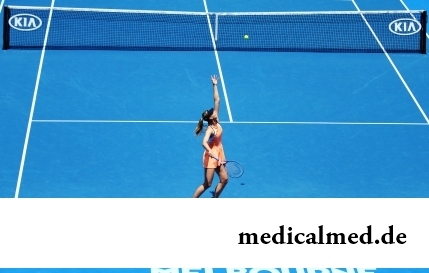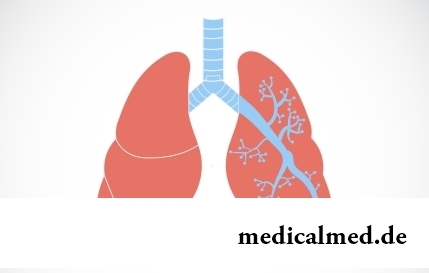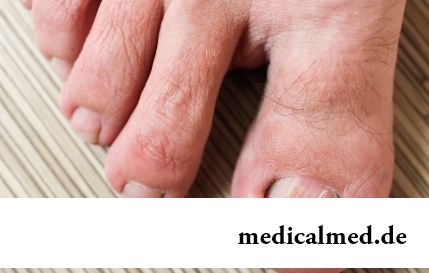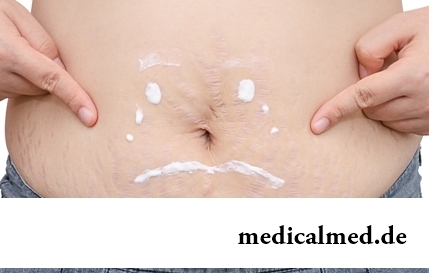





Neurosises
General characteristic of a disease

The term "neurosis" is used for designation of the whole group of psychological frustration with the general signs. Persuasive states, hysterical attacks or vegetative (functional) disturbances in work of bodies are considered as those.
For the first time at children and adults in medical circles started talking about neurosises at the initiative of the Scottish doctor Kullen in 1776. Since then relevance of discussions about classification and diagnosis of a disease did not decrease at all. In domestic medicine , for example, long time in general was absent, per se, the concept "neurosis" for designation of an independent disease. Today other extreme when instead of the term "neurosis" several names of the neurotic, caused by a stress frustration are used at once is quite often observed.
Neurosises - symptoms and kinds of a disease
Difficulties with creation of one standard classification of a disease are caused by a huge number of the most different symptoms of neurosis. Neurotic reactions of each person are deeply individual and often depend on the situation which caused the internal conflict, inability to make the decision or fear of certain future events in the patient. The simplified classification of neurosises by symptoms of neurologic frustration assumes existence of at least 3 kinds of a disease: neurosis of persuasive states, a neurasthenia, hysterical neurosis (the most widespread type of neurosis at children).
Neurosis of persuasive states
Neurosis of persuasive states, it is obsessivny neurosis, it is expressed in insuperable desire of the patient to make certain actions or in inexplicable fear of the specific situations repeating in his life. The patient keeps the critical attitude towards reality, realizes abnormality of the behavior and because of it experiences feeling of alienation. Symptoms of neurosis of persuasive states can be the most any: from an uncontrollable habit always to count steps to a raspravleniye of nonexistent folds on clothes or desire to come back home several times to check whether the iron is switched off.
Different types of phobias (fear of the enclosed space or open space, fear to catch, go crazy or die of some disease) – all this too kinds of neurosis at children and adults. One more symptom of neurosis of this type – formation at patients of rituals, for example, a habit to come back home only a certain route, etc. Neurosis of persuasive states can develop at the person for years. The patient gradually adapts to the phobias and tries to avoid the situations causing in him unmotivated fear.
Neurasthenia
The disease is quite often called asthenic neurosis. Complaints to increased fatigue, inability to concentrate, feeling of weakness, apathy are characteristic of patients. At the same time the lowered working capacity and slackness are observed against the background of excessive emotional excitability. The patients suffering from a neurasthenia are usually quick-tempered, stay in a condition of constant tension, and the slightest external irritant can cause in them rough reaction. Other characteristic symptoms of neurosis of asthenic type - sleep disorders, headaches, functional failures in work of digestive tract, sexual and cardiovascular systems.
Hysterical neurosis
This type of a disease is followed by various vegetative, motive and touch frustration. The patient cannot control completely the body and makes the involuntary movements. Unlike patients with different types of psychoses, to the person with symptoms of neurosis of hysterical type its motor reactions bring discomfort, but to resist to them it appears not in forces.
Very often patients with hysterical neurosis complain of the headache which is pulling together as if a hoop, the patient's whisky. Other symptoms of neurosis of this type - a tremor (twitching) of extremities, the heads, a century, a shiver, partial or total loss of sensitivity, pain of psychogenic character. Many researchers consider a kind of a disease some types of anorexia, enuresis and stutter. Children's neurosis of hysterical type is often shown in the form of a habit to bend lips, to incline the head, to pull out hair, eyelashes or to comb skin till it bleeds.
Neurosises – treatment and forecasts
Therapy of a disease – specialization of doctors of the neurologist and psychotherapist. The medicamentous principle of treatment of neurosis consists in purpose of tranquilizers of group of benzodiazepines. Psychoactive agents of these drugs cause drowsiness in the patient, reduce excitability, have anticonvulsant effect. Unfortunately, tranquilizers of this group have a considerable list of by-effects. At drug treatment of neurosis nausea, a skin itch, locks, decrease in sexual function are quite often observed. As a result of 3-4 months of regular reception of tranquilizers formation of resistant dependence on medicine is possible.
Part of complex treatment of neurosises of various etiology are also nootropa, psychostimulants, antidepressants, vitamin and mineral complexes, physical therapy and physiotherapy exercises. In addition sick the psychotherapy sessions including individual conversations, hypnosis, group and family consultations and art therapy are appointed. The problem of non-drug treatment of neurosis consists in change of the relation of the most sick to a problem situation. Neurologic frustration are, as a rule, reversible. And the timely address to the doctor allows to avoid the long nature of treatment of neurosis.
Treatment of neurosises at children
Individual disease and the diagnosis "children's neurosis" in medicine does not exist. Neurosises at children, as well as adults is a reversible frustration of mentality. Intra family problems become the reason of children's neurosis most often: scandals between parents, the conflicts in a garden or school, the endured strong fright, etc. As reaction to a psychoinjury gradually develops children's neurosis which reason establish only the qualified psychotherapist often can.
Medicamentous therapy of children's neurosis meets quite seldom. One demulcents not to solve this problem, and many drugs for treatment of neurosis at adults are contraindicated to children owing to their early age. At neurosises at children art therapy is usually used: drawing, molding, designing, dances. But their efficiency depends on as far as parents will be able to change the vital circumstances which caused the neurotic reaction which developed into children's neurosis in the child.
Work which to the person not to liking, is much more harmful to his mentality, than lack of work in general.

Good appetite was always considered as a sign of good health. The correct operation of the mechanism which is responsible for the need for nutritious...
Section: Articles about health
Proofs of efficiency of Mildronate at treatment of coronary heart disease with stenocardia can be found in many publications of the end of the twentieth century. Researches were conducted since 1984, including placebo - controlled effects. In total клиничес...
Section: Articles about health
With age in a human body harmful substances collect. We receive them with food and water, at inhalation of the contaminated air, reception of medicines, use of household chemicals and cosmetics. A considerable part of toxins accumulates in a liver which main function is continuous purification of blood. This body begins to knock as any got littered filter, and efficiency of its work decreases....
Section: Articles about health
"Epilepsy" doctors made the diagnosis in antique times. Displays of an illness and pattern of its development are very well studied. Odes...
Section: Articles about health
Kidneys perform the most important function of clarification of blood from those products of metabolic processes which cannot be used by an organism for obtaining energy and construction of new cells. With the urine produced by kidneys from a body of the person bulk is removed...
Section: Articles about health
All of us, unfortunately, should face flu nearly an every year. It would seem, so frequent disease has to be studied already up and down, and each person, at least once to them had (and the number of such people in our country aims at 100%), has to know the basic rules of its treatment. However as shows experience of doctors, there is no it, and often people, self-confidently thinking what is known as it is necessary to be treated, make mistakes....
Section: Articles about health
They say that to ensure health and longevity of people it is obliged. Really, at competent approach to these questions, we will pass...
Section: Articles about health
The advantage of swimming for the person is so high that this sport is not only the most popular, but also is widely applied in medicine and rehabilitation processes. If you look for for yourself the occupation allowing pleasantly and to spend time, then swimming with advantage...
Section: Slideshow
EKO, or extracorporal fertilization - a method of treatment of infertility which became the reason of a set of broken-down copies in due time accused the people working on its creation neither more nor less of rivalry good luck. Already very few people deny the right of a method for existence, and to surprise nobody with "children from a test tube". And nevertheless, a certain magic in the procedure of artificial fertilization is, process of origin of new life is always a secret, and even it р now...
Section: Articles about health
Popular joke that there are no healthy people, and is nedoobsledovanny, most of us considers an honest truth, and put that...
Section: Articles about health
The word "onikhokriptoz" is unfamiliar to most of people, meanwhile quite so physicians call very widespread problem: the growing of edge of a nail into surrounding fabrics causing inflammatory process. Usually the illness affects thumbs of legs, and is followed покр...
Section: Articles about health
An eye of the person daily experiences considerable strain. The problem of preservation of sight is for many years directly connected with a question of supply of tissues of eye enough oxygen and nutrients. This task is carried out by small vessels – capillaries. For normal functioning of the visual device extremely important that they kept the integrity, but it works well not always. Microtraumas of eye vessels during which there are small hemorrhages it is extraordinary расп...
Section: Articles about health
The brain of the person is studied not one hundred years, but the quantity of the riddles connected with this body increases rather, than reducing...
Section: Articles about health
History of mankind contains several tens of epidemics whose emergence was compared by eyewitnesses and historians to doomsday. The most terrible of them claimed the lives of millions of people, having made even the whole people to the person of the earth. What they − the diseases striking terror? Daringly...
Section: Articles about health
The main role in development of a peptic ulcer of a stomach and duodenum the bacterium Helikobakter plays pilor. Activity and the strengthened reproduction of this microorganism lead to weakening of protection of mucous membranes and their erosive damage. Displays of an illness seriously reduce quality of life: patients regularly test attacks of severe pain, heartburn, nausea. On this background also psychoemotional malfunctions develop: a kidney-vetch, as a rule, shows an acrimony, ча...
Section: Articles about health
Smack in a mouth can arise in the natural way – as a result of lack of morning hygiene or reception of the corresponding food. Odn...
Section: Articles about health
Household skills which to us so diligently imparted in the childhood it appears, not always bring only benefit. According to results of the last researches, some habits which for a long time were considered useful and even necessary can become...
Section: Articles about health
Striya (extension) are the defects of skin having an appearance of direct or wavy strips from 1 to 10 cm long and 1-5 mm wide. In most cases at women of a striya are located on a stomach, hips, a breast or buttocks. At athletes they can appear on shoulders and the internal surface of forearms. At initial stages of development of an extension have red or lilac color, but over time their coloring turns pale, and strips become whitish, getting a nacreous shade....
Section: Articles about health
One of the useful properties presented to the person by the nature is ability to feel fear. This ability is called a signal...
Section: Articles about health
It is known that the person for 80% consists of water which participates in all processes of an organism. The person loses liquid daily – as a result of sweating, breath, an urination, and its insufficient completion due to various reasons can bring to обезвожив...
Section: Articles about health
Doctors claim that the people not so familiar with a dorsodynia occur among adult Russians very seldom. At the same time the vast majority of the patients who are periodically testing this indisposition do not hurry to ask for medical care at all. On the one hand, there is an opinion that feelings of this sort at mature age are nearly natural phenomenon which is not doing serious harm to health. With another – practice of self-treatment various obezbol is eurysynusic...
Section: Articles about health
The trophic ulcer is not an independent disease. This heavy complication arising owing to a thermal injury (a burn...
Section: Articles about health
Modern footwear is extremely various. It stopped being only protection for legs long ago. Today shoes, boots, barefoot persons choose not so much proceeding from their convenience and functionality how many being guided by outward, brand and an opportunity to add with it...
Section: Articles about health
The unpleasant feelings connected with spring breakdown are familiar almost to each of us. Often happens that in March-April on the person weakness leans: he suffers from drowsiness, complains of bad mood, loss of interest in life and failures in affairs....
Section: Articles about health
Contrary to popular belief, the multiple sclerosis (MS) is not connected neither with sclerous changes of walls of vessels, nor about age...
Section: Articles about health
Summer in the heat. Many are going to spend vacation abroad. Travelers the tender seas, rest on beaches wait, for sightseeing, campaigns on natural and cultural reserves. But, unfortunately, on vacation also problems about health can wait for us...
Section: Articles about health
Memory is an ability of the central nervous system to fix, keep and as necessary to reproduce information on knowledge or skills received by the person or an animal during life. The mechanism of this process is up to the end not studied....
Section: Articles about health
